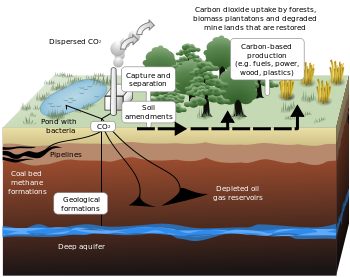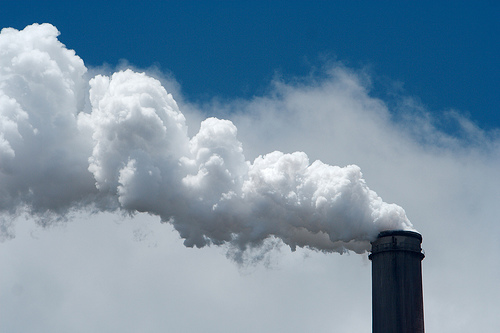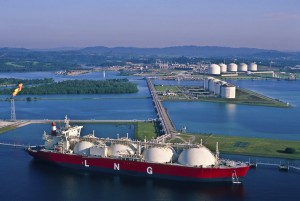Carbon capture and storage is the process of capturing the carbon dioxide that is produced from large scale carbon generating operations. This would typically be power plants that burn fossil fuel or biofuel to generate electricity. Larger scale industrial process also generate massive amounts of carbon dioxide and are therefore also prime candidates for Carbon Capture and Storage (CCS) technologies.
CCS technologies, when effectively deployed can result in the capture of up to 90% of CO2 that would otherwise be released into the atmosphere. Such technologies when used with renewable biomass fuel sources can actually result in a carbon-negative process for generating energy.
The CCS process can be broken in to three primary phases:
- Carbon Dioxide Capture Techniques – This involves intervention at the point in which the carbon is produced at a power plant or industrial plant. The CO2 is separated from the other gases created in the process of generating electricity or other production processes. This is done by one of three primary methods: pre-combustion capture, post-combustion capture and oxyfuel combustion.
- Carbon Dioxide Transpiration Techniques – CO2 captured at the source of production can be transported by a number of methods including pipeline, ship, and road tankers. The process is similar to that of transporting natural gas or oil. The infrastructure requirements for transporting captured CO2 and natural gas are similar.
- Carbon Dioxide Storage Techniques – Once transported, carbon dioxide is stored in liquid form. Typically, it would be stored in large geological formations miles underground. Often old depleted gas or oil fields can be used for CO2 storage. CO2 can also be used at existing but depleting oil fields. There the CO2 might be injected to increase oil recovery in a process called “enhanced oil recovery”. Approximately 30 to 50 million metric tonnes of CO2 are injected annually in the United States into declining oil fields.
Safe underground storage of Co2 relies on a mechanism know as structural storage whereby an impermeable layer of rock known as cap rock traps the CO2 underground. This impermeable layer of rock prevents the CO2 from escaping above ground and entering the atmosphere.



Leave a Reply